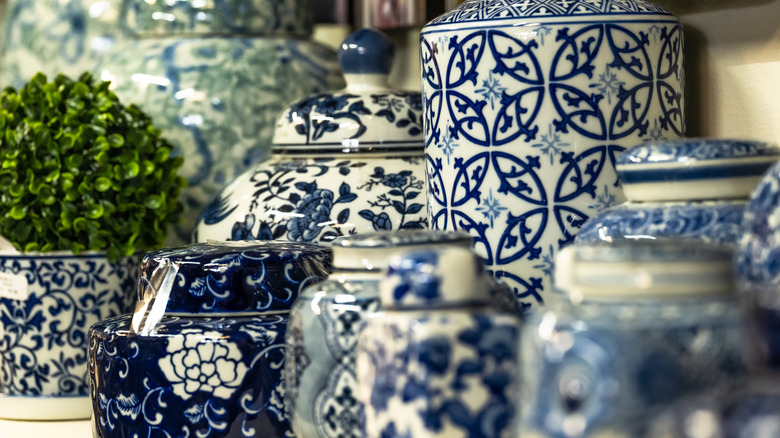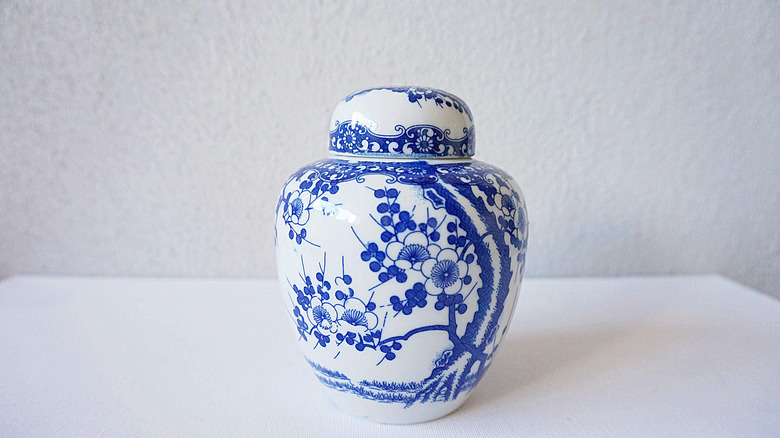How To Know If Your Ginger Jar Is Valuable (And If It's Truly Authentic)
You may have seen an abundance of décor and design spreads featuring beautiful blue and white jars used for everything from canisters and lamp bases to chic art objects meant purely for decoration. Commonly called ginger jars, these Chinese jars, either antiques or modern reproductions, add a beautiful classic look to a number of interior styles. These jars, called "guan" (translation: "jar"), gained popularity during the Ming Dynasty during the 14th-17th century carrying spices, herbs, and yes, ginger. Over time, they came to be called "ginger jars" specifically by Europeans in the 18th and 19th centuries, when they became valuable collectibles. Today, antique ginger jars can be worth anywhere from several hundred to thousands of dollars in good condition. While you can often spot them by their signature blue and white look, as well as their rounded shape, it may take a little more digging to know if you have a true antique or a modern reproduction, or even if what you have can be called a ginger jar at all. There are, however, numerous ways to estimate the value, including shape, weight, and markings, that can help you assess the age and origins of your jar.
Real antique ginger jars, some several hundred years old, can be challenging to sort out from more modern reproductions created the past few centuries, especially if you stumble upon them in an antique store, flea markets, or thrift store. You can easily repurpose ginger jars around your home for everything from bathroom and kitchen storage to making a vintage ginger jar lamp. New or old, they give off a richly patterned high-end look.
Identifying antique ginger jars
Antique ginger jars, dating from over 100 years old, often bear the blue and white design, but can also be a number of other different designs and colors, including green or multicolored, as well as solid colors. They are most identifiable by their shape, usually oblong with broad shoulders and a small opening for the lid. Usually, the lids were quite flat and could be made of wood or ceramic. Some of the pieces people mistake for ginger jars are actually temple jars with more flared bottoms and pointed or ornate lids, which were used largely for ceremonial purposes more than storage. Like ginger jars, these valuable jars came in many colors and also included imagery based on flowers, landscapes, Chinese folklore, and dragons.
Antique ginger jars that sailed the high seas were often heavier than modern reproductions made after the 19th century, which many believe was to help balance the weight of the ballast on ships they traveled in. More modern ornate ginger jars, even if they boast the same shape, will likely be more lightweight and made of thinner ceramic. One of the best ways to identify antique ginger jars would be to flip it over to look for any identifying marks, which can include manufacturing information and/or dates of the Chinese empire in power when the jar was manufactured. The clearer the mark, the more likely it is original, since blurry or badly reproduced marks may indicate a copy or reproduction.

